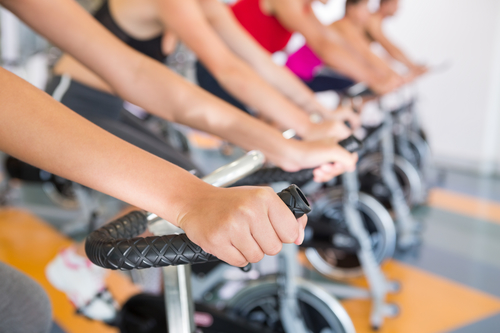You’re lacing up your running shoes, as you begin mentally preparing for the long and awesome workout you promised yourself you would have today.
You naturally grab your earbuds, hit the pavement, and begin playing the new workout playlist you spent some time creating.
Right away your pace begins to suffer. You quickly realize that the same songs that you rocked out to in the car driving to work, are not the same songs that are going to help power you through this workout.
Let’s face it. For most of us, exercise is hard. Getting out there can be a challenge. When we do get started, most of us need that extra bit of motivation.
This is where music plays such an important role. Music is scientifically proven to make exercise more enjoyable, which is why 1.1 BILLION people worldwide listen to music when they exercise.

However, creating an awesome, music-driven experience for exercise is not a simple process. Good music curation takes time, a knowledge of music, and an expansive music library. Selecting the songs is only the start.
At RockMyRun, we believe creating an awesome, music-driven experience for exercise is a result of each of these three components coming together—Music Curation, the Mix Recipe, and Technology.
Over the next few weeks we’ll dive into these three components, starting with…
Music Curation…by humans.
Don’t get us wrong, we love technology at RockMyRun, but an algorithm is no substitute for a human being who is passionate and knowledgeable about music.
Variety
Whether it’s you, or a professional DJ curating the music, it’s important to have a wide variety of good music to choose from. Variety is key.
You don’t want to hear the same songs on every playlist. We love Michael Jackson, but “Don’t Stop ‘Til You Get Enough” isn’t his only song, nor does it need to be included in every 70s, 80s, disco, or soul-themed mix.
Having a good blend of favorites as compared to new music is very important as well. We think new music discovery is awesome—and there are lots of places to find new music, including in our app. However, we’ve found that for exercise, people respond best to the music they are familiar with.
It adds that extra motivation and may even lead to some singing along and head bobbing. Experienced DJs know that you need to build the trust of the audience before you play something new—nothing kills a dance floor faster than something people haven’t heard before, particularly if it’s not synced up properly.
Exercise is no different. New songs work best when placed skillfully between well-known tracks by someone who knows what they are doing.
Oldies & Newbies
It’s also important to have a good mix between original versions of songs and remixed versions. People hear original versions on the radio and streaming services, and iTunes. It’s what people know and like.
Some remixes are great, but many are too different from the original version to evoke the same response. Often times remixes are best to use when the speed or energy of the original track isn’t quite right for the mix.

This leads to perhaps the most IMPORTANT aspects of music curation for exercise…
BPM
BEATS PER MINUTE (BPM) and ENERGY. BPM, a song’s overall speed, is not energy. And energy is not BPM. Picking songs with the wrong BPM or energy can deflate your workout like a soggy old balloon.
Some apps select songs based on BPM only, which is a great start, but typically ends there. For example, ”Pour Some Sugar on Me” (Def Leppard) and “True Colors” (Cyndi Lauper) are each 84 BPM. Which do you want to hear when pushing up a hill? “Sandstorm” (Darude) and “Rocket Man” (Elton John) are each 136 BPM. Which do you want to hear in the final half-mile? On the flip side, “Turn Down for What” (DJ Snake) and “Lose Yourself” (Eminem) are 20 BPM apart but have energy that is complimentary and would work well together.
This gets back to our HUMAN. No matter how much tagging and intelligence an algorithm attempts to have, it can always miss this stuff and create a disappointing (dare we say, deflating) experience. Humans matter (sorry Watson).
Hopefully this gives you a few new ideas of what to keep in mind when when selecting music (or a human) for your next new playlist. Or you can check out RockMyRun (available for iOS and Android), we’ve already done the work for you :).
Did we miss any tips? Did you find this helpful? Let us know! We would love to hear your comments and feedback.
Until next time, ROCK ON!
Derek Quackenbush from RockMyRun




Lots of useful information here! Thanks for sharing and keep up the good work!
We are glad you found this useful! Thanks!